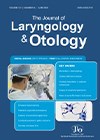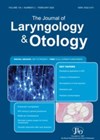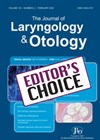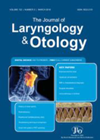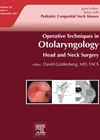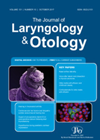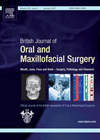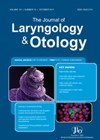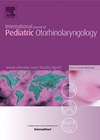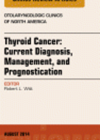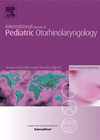
Journal Reviews
Occurrence of cancer in asymmetrical tonsillar enlargement in adults
With significant increase in head and neck cancer in the last decade, attributed to HPV, fast-track referrals from primary care have markedly increased, adding further to the burden on the NHS. Whether or not unilateral tonsillar enlargement alone, without red...
Ultrasound-guided core biopsy of neck lumps as first-line investigative modality supersedes fine needle aspiration cytology in the diagnosis of neck lumps
Ultrasound-guided fine needle aspiration cytology (USFNAC) when applied as initial investigation often proves non-diagnostic, the incidence being as high as 50% in a recent audit. In this study, the authors applied ultrasound-guided core biopsy (USCB) to neck lumps over 1cm...
Modifying two-week wait protocol for suspected head and neck cancer patients during COVID-19
As healthcare workers, we are committed to ensuring that our patients continue to receive the optimum care that we are set up to deliver. However, the last year has shown that we need to be mindful of balancing this with...
COVID-19 and medical practice
The pandemic has deeply affected all types of medical and surgical practice and even publications. In this issue, the lead article was on the French consensus on ENT practice during the pandemic. In ENT practice, both patients and health workers...
Is a chest x-ray necessary in making urgent referrals for suspected head and neck cancer?
The article presents an audit on urgent referrals for suspected head and neck cancer in 2144 patients. Only 8.6% of cases proved positive for head and neck cancer. The Scottish Referral Guidelines were adhered only in 55.1% of cases. Interestingly,...
Radiology and paediatric neck lumps
This is a comprehensive article examining the modalities available for children presenting with suspected congenital neck lumps. Each modality is explained in turn, with pros and cons highlighted, but also in the context of the emergency patient and the elective....
A comparison between ultrasonography-guided drainage with open surgical drainage of deep neck space abscesses
A comparison between ultrasonography-guided drainage with open surgical drainage of deep neck space abscesses Neck space abscesses are common; conventional drainage involves intra-oral or extra-oral approaches. The former can compromise the airway and the latter can cause neurovascular injuries, scarring...
5-cm incision for neck dissection and free flap reconstruction
Patients with oral cavity squamous cell carcinoma (SCC) will commonly require neck dissection as it is associated with a higher rate of overall and disease free survival. Free flap reconstruction of the defect following surgical resection is considered the gold...
Rationales to explore the neck in penetrating injuries
Penetrating neck injuries in the UK are more commonly associated with low velocity objects such as knives and blades as opposed to gunshots. To explore the neck requires careful consideration of the need to do so in line with Burgess...
Paediatric lymphadenopathy – helpful decision making
The authors present a very helpful algorithm to manage cervical lymphadenopathy in children. The goal of managing children with inflamed lymph glands is to identify the rare malignant case and not over-investigate the vast majority of benign reactive swellings –...
Thyroid cancer: to dissect the neck or not?
This is a good review of the much-debated management of the neck in thyroid cancer. It discusses oncological goals that must be achieved whilst maintaining voice, swallowing and parathyroid function. A clear description is made of the common nodal basins...
Are biofilms present in deep neck abscesses?
Why are some cervical abscesses resistant to antibiotic treatment? The authors postulate that a biofilm develops to allow the bacteria to overcome normal host defences. They investigated the micro-environment of deep neck abscesses in a largely paediatric cohort. Biopsies of...

